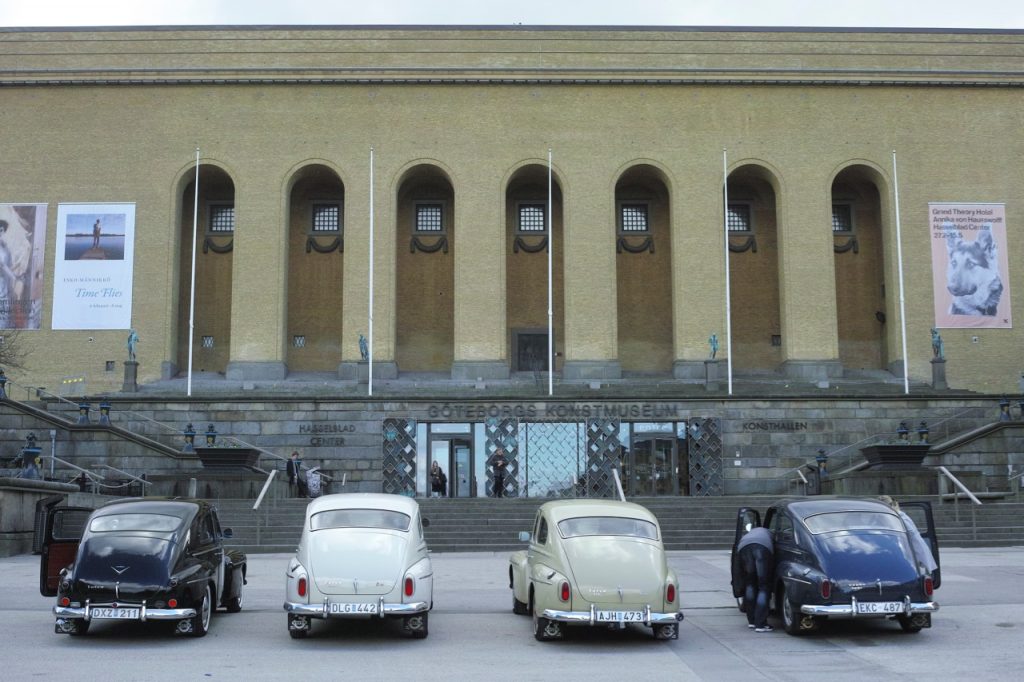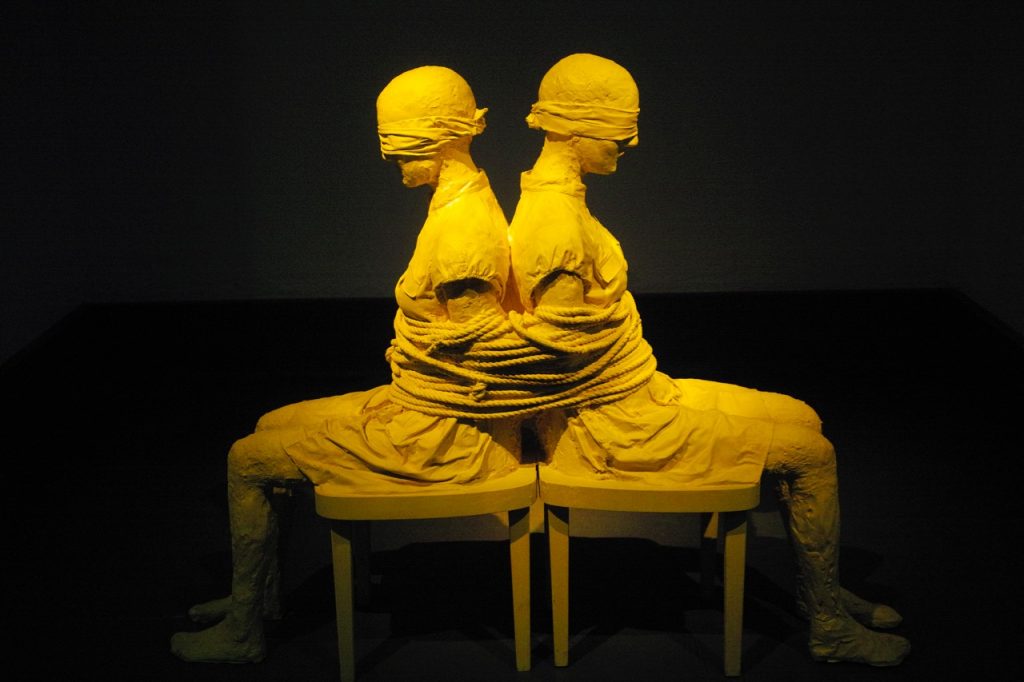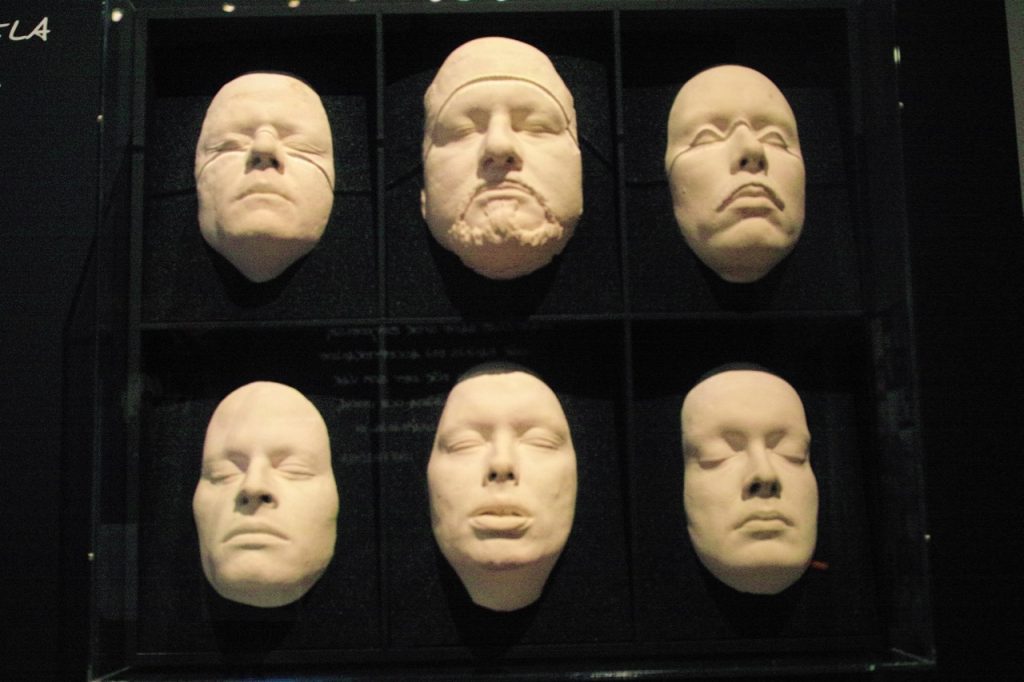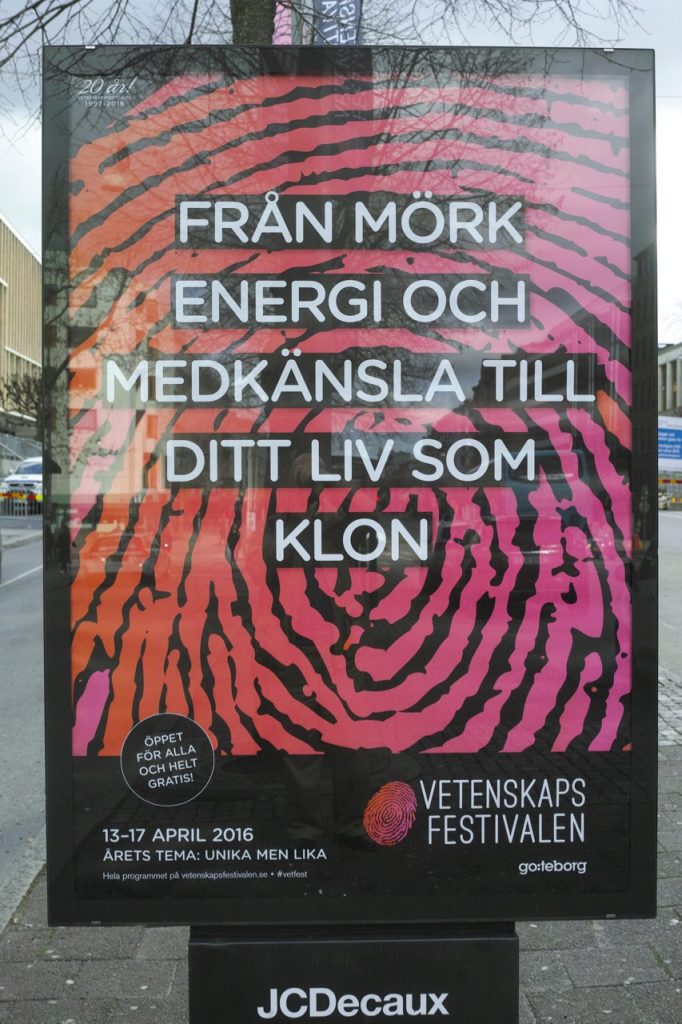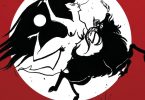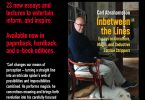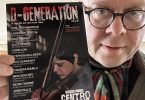They’ve always made a lot of good music in Gothenburg. Or, simply, a lot of music, as there’s been a vast amount of the bad kind too. That has often been the reason for my many visits. Recently, I was invited both to lecture and show one of my recent films. Despite this, I realised that there was no way I could escape my musical relationship with the place. Not that I would ever want to, but still…
At the wonderful bookstore Aniara, I delivered a lecture about Carl Jung’s move from psychology to pop culture and how his emphasis on the necessity of myth is now more necessary than ever. This bookstore, specialising in philosophy, has recently been taken over by friends of mine: Elisabeth Hansen Punzi and her husband Torben Hansen. Elisabeth I’ve known since the early 1990s when she was in one of my favourite Gothenburg bands, Whipped Cream. This took me back to my first Gothenburg phase, late 80s, when I was a hang-around at the art collective Radium 226.05 (created by artists Carl Michael von Hausswolff, Erik Pauser and Ulrich Hillebrand). Whipped Cream were just one of many Gothenburg bands I loved, the main one being, of course, Union Carbide Productions. Many of them were on Radium’s record label.
At the lecture, a very mixed crowd had gathered. Always honouring and interesting. And even more so as three of the people were notable local musicians: Nikke Ström from classic prog acts Nationalteatern and Nynningen, Simon Ohlsson from my post-Union Carbide favourites Silverbullit and Adam Wladis, who has been bass virtuoso for Union Carbide and many other acts. I wasn’t as happy to hear that everyone found the talk interesting as I was when Simon told me Silverbullit are recording a new album.
On the following day I went museum hopping, as I frequently do. Göteborgs Konstmuseums Hasselblad Center showed two major exhibitions, one by Finnish photographer Eskö Männikkö and one by local heroine Annika von Hausswolff (née Söderholm, former wife of Carl Michael). When I originally knew Annika she had just picked up a camera (under the tutelage of Gothenburg legend/genius Tom Benson, whose first ever monograph I’m publishing in the autumn of 2016). She took many of the band photos for Radium. Later she became a big international art star, and deservedly so.
Before I could proceed onwards, I was struck by two interesting things by the stairs to the museum. First, four classic Volvo PV 444s drove up and parked in symmetry right by the stairs. I’m sure there was some logical explanation to it, but my immediate interpretation was that it was a brave act of defiance against the modernity slowly seeping into the museum (for instance the politically correct yet flamboyant flaunting of female masochism by Charlotte Gyllenhammar and Cajsa von Zeipel in a building which hosts real gender-dynamic classics by Edvard Munch and Lucas Cranach). Before I could even ponder, I was asked by a quite ragged as well as rugged man if I knew whether Polaroid cameras and film were still being manufactured. I confusedly answered ”yes” and he seemed content with that and strolled away. If he was truly on the lookout for a Polaroid adventure, I wish him the best of luck. If he was a mystic sage of sorts, I can only interpret his message as a reminder of the potency of photography: it’s the immediacy of the medium that creates timelessness.
A propos: only a few days before I left, I met with Gothenburg-based photographer extraordinaire Lars Sundestrand in Stockholm. Lars published the excellent fanzine Funtime in the late 70s and early 80s, which was a huge inspiration for me when I got into fanzine making. His strong sense of portraiture made Funtime more than just a fanzine. It was a beautiful example of applying aesthetic sense, an intellectual vision and a whole lot of diligence on to a chaotic yet powerful music scene. Lars showed me some of the books he’s made recently (often in only one copy!) and it was just astounding. Total time travel, tremendously titillating.
All of this was further amplified when I visited the exhibition about Gothenburg’s music life since the 1950s at Stadsmuseet. One of my photos is in the exhibition, showing musician/producer Henryk Lipp in the Music-a-matic studio 1987, recording Union Carbide’s debut album. Taken 29 years ago but still evoking both sound and vision (in my mind at least). This show ranged from big trash like Ace of Base to newer oddities like Solanas Cunts (”We are five feminist cunts with bolt cutters ready to cut cock”). As my main interest was/is in the late 80s/early 90s rock/indie scene, I was a bit disappointed by how little attention that era received in comparison with other considerably more ephemeral things (Solanas Cunts being just one example). However, that is a very subjective opinion. Seeing space popsters Spotnicks’ stage costumes was fascinating enough to compensate for any other lack or loss. I was also very honoured that my book Fanzinera – Photographs 1985-1988 had been placed right beside the exhibition catalog in the museum shop. Yet another full circle-mind jolt-time travel happening.
Evening number two meant a screening of my film Sub Umbra Alarum Luna at FOLK, hosted by the eminent Joachim Nordwall of Ideal Recordings, nowadays the most interesting record label in Gothenburg (together with Kning Disk). As this film is a tribute to Derek Jarman’s super 8 epic In the Shadow of the Sun (1975, with music by Throbbing Gristle 1980), it brought to mind that the first time I played with Genesis P-Orridge was in… Gothenburg. Anyway, competition was tough this evening. Why? Because local superhero Ebbot Lundberg, formerly of Union Carbide and (equally great) The Soundtrack Of Our Lives, played a mere 200 meters away at the Pustervik venue. And slightly further away immensely talented and celebrated Anna von Hausswolff (yes, daughter of Carl Michael. I remember her as a toddler!) performed together with the Gothenburg symphony orchestra! What are the odds?
On my way to FOLK, I passed by some some kids with a loud mobile sound system. They rapped away about something I could only interpret as Christian messages – an interesting contrast. A Roma woman tried to sell me a magazine about Roma life, after having been neglected by the rappers. I would have liked to talk to her to see if she knew the great musician Paolo (with whom I made a film in Gothenburg: Paolo knocks my socks off with some evergreens), but the hip hopping noise simply wouldn’t allow it.
Then it was screening time and I was happy. Great projection, great sound, great place and great friends who turned up despite all the other great goings-on. Honouring in deed indeed!
On my way back I thought about a poster I’d seen earlier in the day, promoting some kind of science festival. It read: “From dark energy and compassion to your life as a clone.” Beyond the initial absurdism of the message, there was perhaps also something prophetic? There was certainly a dark energy around in the music from Gothenburg back then, and I was part of it. Then certainly compassion entered the greater game of life in many ways. But a clone? We absolutely live in a robotic and what Malcolm McLaren called a “karaoke” culture, but still… Perhaps if we look at it from the point of view of a cluster containing a similar (rather than identical) spirit, then fine. We carry on with the music and overall culture that brought us up. That makes sense and is also what makes life interesting. I wouldn’t go so far as call myself a Gothenburg clone in that sense, but I do realise over and over how important this place has been for me. Perhaps “mutation” would be a better word to describe it?
When I eventually returned to the hotel I was so tired I couldn’t sleep. So I watched some ladies’ tennis on TV and listened to Silverbullit. An absolutely perfect way to end a weekend in Gothenburg.

